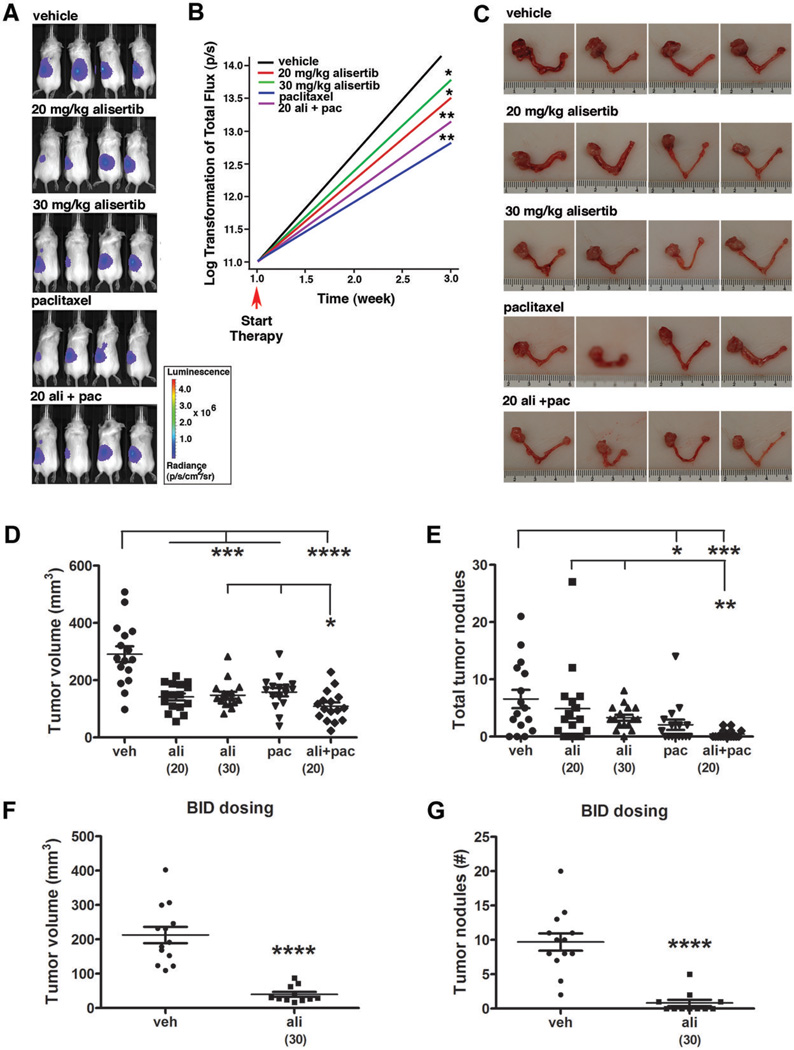Figure 5. Alisertib alone or in combination with paclitaxel inhibits ovarian carcinoma growth and dissemination.
(A) Representative bioluminescent images of mice treated for two weeks with: vehicle (veh), 20 mg/kg alisertib (ali), 30 mg/kg alisertib, 5 mg/kg paclitaxel (pac), and 20 mg/kg alisertib + paclitaxel (20 ali + pac). (B) Average tumor growth rate as determined from weekly BLI scans for each treatment group. One-sided Wilcoxon test showed the differences in growth rates were statistically significant from vehicle control (*, P < 0.05 and ***, P < 0.001). (C) Gross images of reproductive tracts from representative mice from each treatment group. (D) Vertical scatter plot depicting tumor volumes calculated from caliper measurements of the primary ovarian tumor for mice in each treatment group where groups labeled with asterisks are statistically significant from vehicle control or from mice treated with combination of ali+pac compared to mice treated with ali or pac alone (*P < 0.05, ***P < 0.001 and ****P < 0.0001) as analyzed by the Mann-Whitney test. (E) Vertical scatter plot depicting the total number of tumor nodules present in the abdominal cavity for mice from each treatment groups is shown. Groups labeled with asterisks are statistically significant from vehicle control labeled with asterisks are statistically significant from vehicle control or from mice treated with combination of ali+pac compared to mice treated with ali or pac alone (*P < 0.05, **P < 0.01 and ***P < 0.001). In a separate experiment, mice treated twice daily with 30 mg/kg alisertib (n=11 mice) exhibited significantly decreased tumor volume (F) and total number of tumor nodules in the abdominal cavity (G) compared to vehicle (n=13 mice) treated controls (****P < 0.0001).

